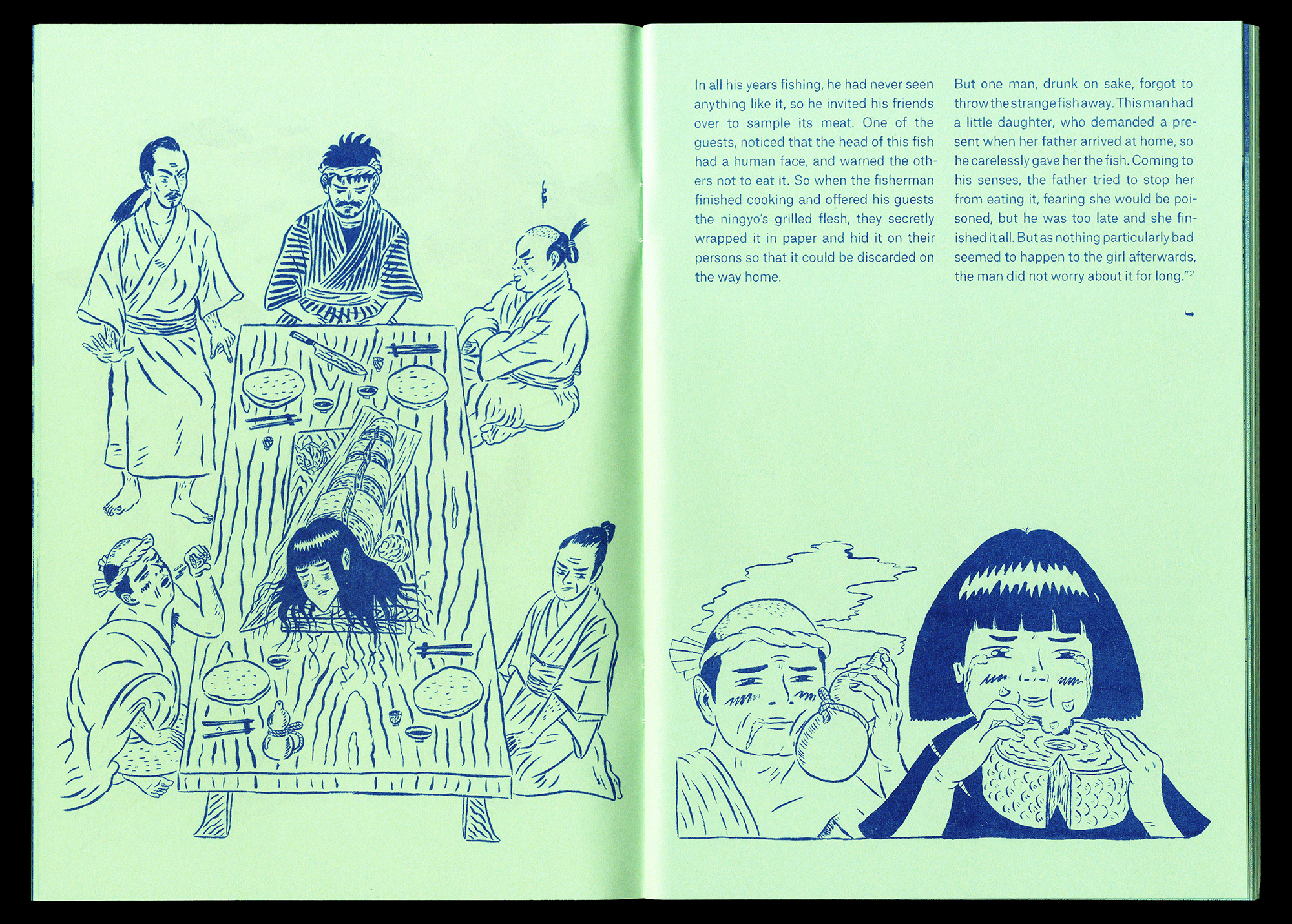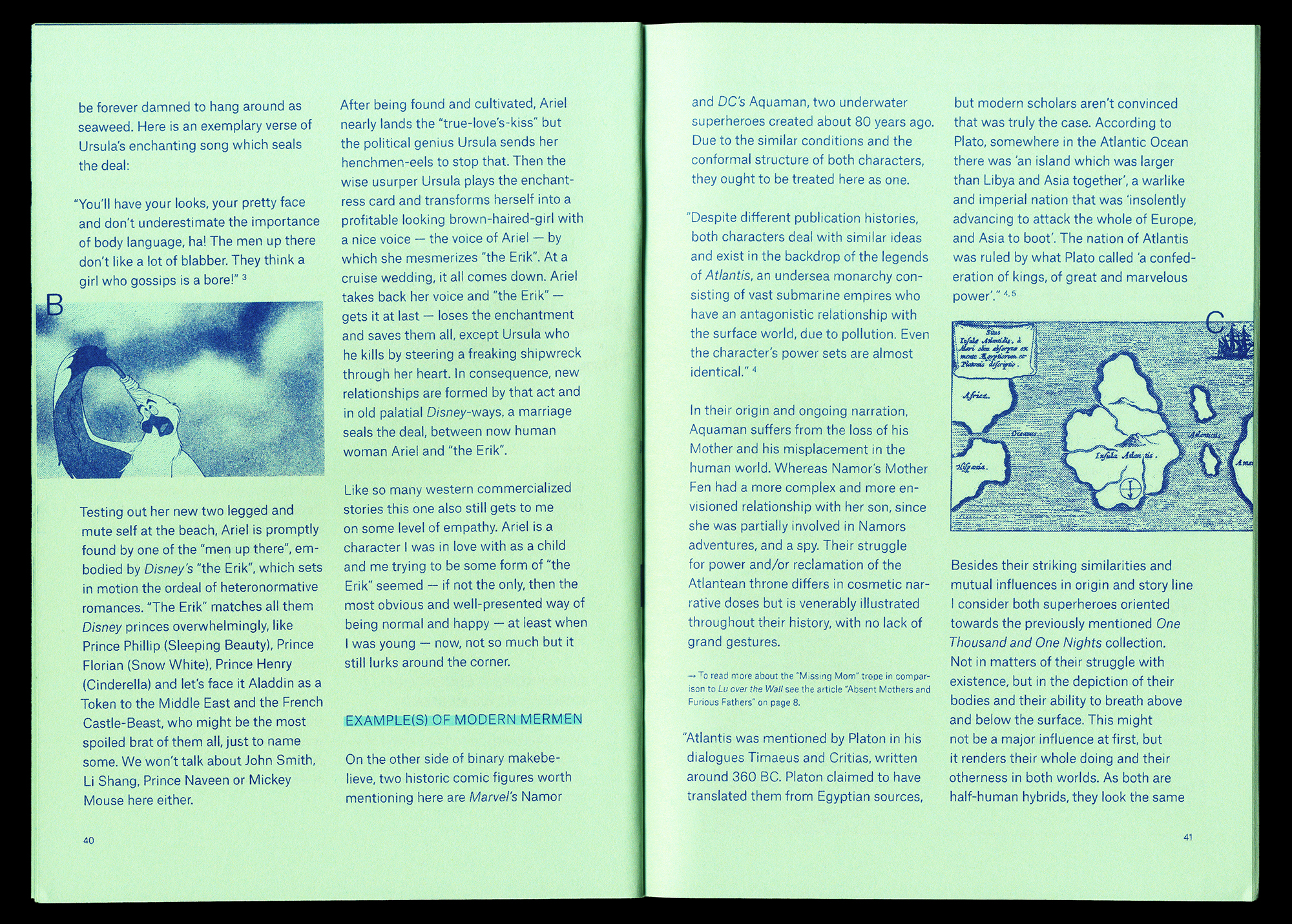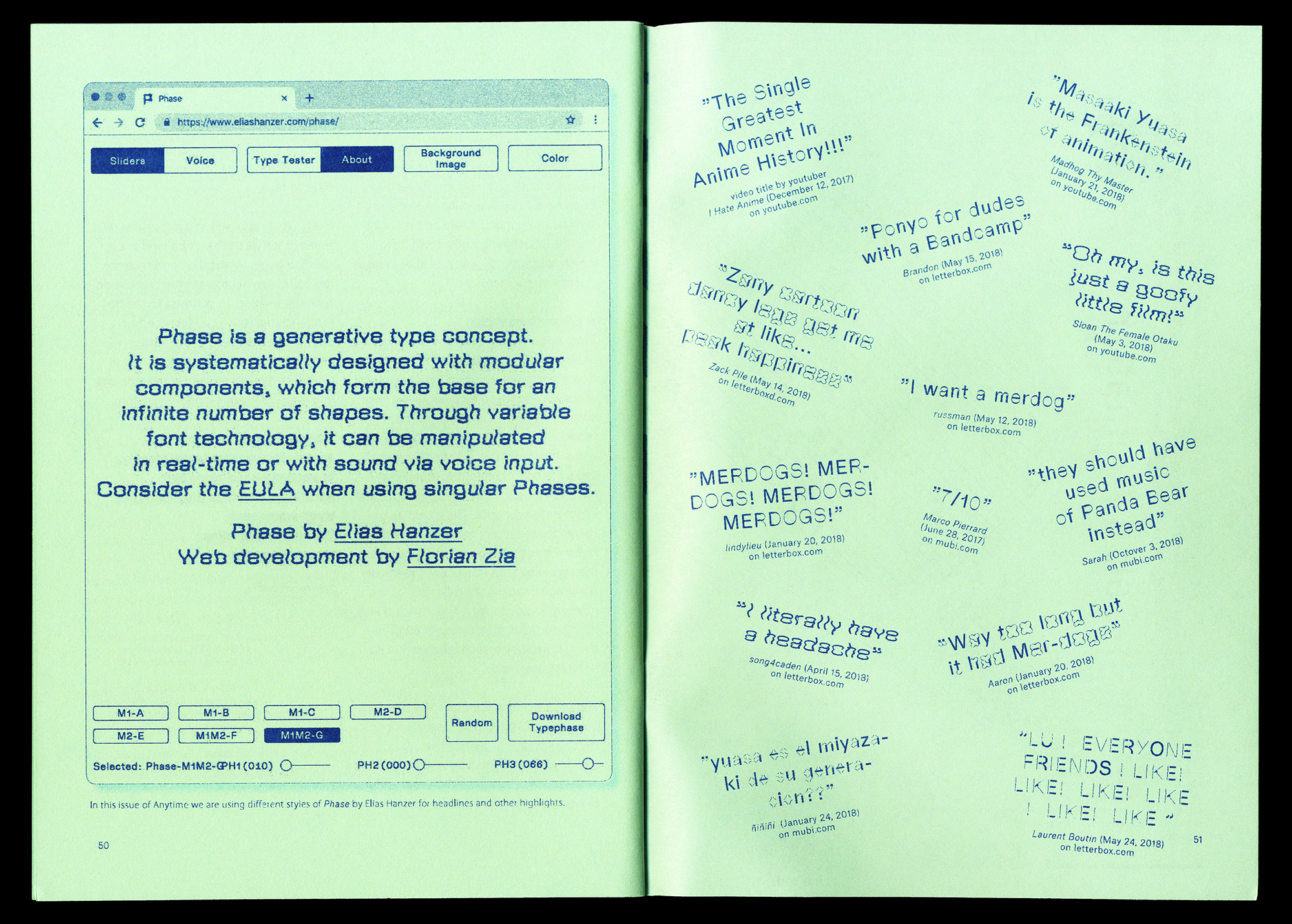ANYTIME ISSUE 4 (2019)
夜明け告げるルーのうた Lu over the Wall
“Lu Over the Wall” is an animated fantasy movie about the encounter of the introverted high-schooler Kai with the ningyo – a mythical creature or merfolk – Lu. On page 14–21 Vinz Schwarzbauer continues his artistic research on Yōkai. The “Spending Props” (collected by Paolo Svaluto Moreolo) are found on page 6–7. The “Missing Mom” trope is analysed by Laura Egger-Karlegger and contrasted with the depiction of furious fathers. On page 22 she writes a love letter to one of the movie’s characters – Grandma Octopus. In “About Dinglehoppers, Imperius Rex and Me”, Georg Wolf gives an overview of mystical sea creatures and analyses their gender-specific differences. The original soundtrack plays a significant role in the movie and is studied in detail in Ricarda Götz’s essay “An Electronic J-Pop Musical”. The desire to leave the small village and “make it is the big city” is a central motif. Martin Sturz makes rural depopulation subject of discussion in his essay “I wish I could leave sooner…” Paolo and Andrej Rutar show the life of the Ama – Japanese apnoea divers, usually women – trough a beautifully illustrated comic. Wonderful artistic contributions – a photograph, an illustration and collages – come from Benjamin Steiner, Gerhard Jordan and Zara Pfeifer.
夜明け告げるルーのうた Lu over the Wall
“Lu Over the Wall” is an animated fantasy movie about the encounter of the introverted high-schooler Kai with the ningyo – a mythical creature or merfolk – Lu. On page 14–21 Vinz Schwarzbauer continues his artistic research on Yōkai. The “Spending Props” (collected by Paolo Svaluto Moreolo) are found on page 6–7. The “Missing Mom” trope is analysed by Laura Egger-Karlegger and contrasted with the depiction of furious fathers. On page 22 she writes a love letter to one of the movie’s characters – Grandma Octopus. In “About Dinglehoppers, Imperius Rex and Me”, Georg Wolf gives an overview of mystical sea creatures and analyses their gender-specific differences. The original soundtrack plays a significant role in the movie and is studied in detail in Ricarda Götz’s essay “An Electronic J-Pop Musical”. The desire to leave the small village and “make it is the big city” is a central motif. Martin Sturz makes rural depopulation subject of discussion in his essay “I wish I could leave sooner…” Paolo and Andrej Rutar show the life of the Ama – Japanese apnoea divers, usually women – trough a beautifully illustrated comic. Wonderful artistic contributions – a photograph, an illustration and collages – come from Benjamin Steiner, Gerhard Jordan and Zara Pfeifer.


























CONTENT
p1 A ningyo from Toriyama Sekien’s Konjaku Hyakki Shūi
p4 ”Coney Island 2018“ by Zara Pfeifer
p6–7 ”Shōji“ by Paolo Svaluto Moreolo
p8–13 “Absent Mothers – Furious Fathers“ by Laura Egger-Karlegger
p14–21 „Anyōkai“ by Vinz Schwarzbauer
p22–24 „Grandma Octopus“ by Laura Egger-Karlegger
p25 “Monofi n“ by Gerhard Jordan
p28–29 by Benjamin Steiner
p30–33 “An Electronic J-Pop Musical“, text by Ricarda G.tz, illustration by Roman Buchberger
p34–35 by Gerhard Jordan
p36–42 “About Dinglehoppers, Imperius Rex and Me“ by Georg Wolf
p43–45 “Ama“, drawings by Paolo Svaluto Moreolo, haiku by Andrej Rutar
p47–49 “Rural Depopulation“ by Martin Sturz
p50 “A hommage to Phase by Elias Hanzer” by Sarah Podbelsek
WITH:
Zara Pfeifer
Paolo Svaluto Moreolo
Laura Egger-Karlegger
Vinz Schwarzbauer
Gerhard Jordan
Benjamin Steiner
Roman Buchberger
Georg Wolf
Andrej Rutar
Martin Sturz
Sarah Podbelse
(in order of appearance)
Zara Pfeifer
Paolo Svaluto Moreolo
Laura Egger-Karlegger
Vinz Schwarzbauer
Gerhard Jordan
Benjamin Steiner
Roman Buchberger
Georg Wolf
Andrej Rutar
Martin Sturz
Sarah Podbelse
(in order of appearance)